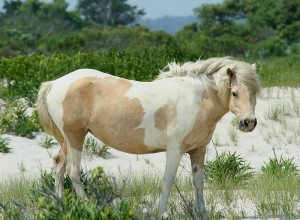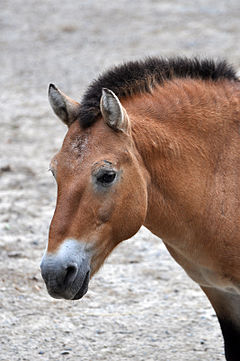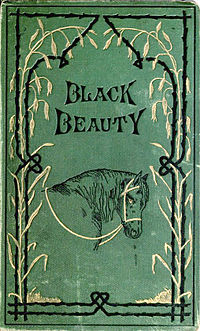Horsing around with really old DNA
As a child I was horse-mad. For a while I actually wanted to be a horse – running around barefoot planning to end up with feet as hard as hooves. Short of that impossible notion, becoming a jockey seemed like the next best thing. Unfortunately, that wasn’t really a choice growing up when and where I did.
So I devoured every horse book I could find in the libraries on Maui and fruitlessly begged my parents for a Welsh pony. Or a Morgan. Maybe an Appaloosa. I swore I would get some horse of my very own as soon as I could manage that. Ironically, that’s quite easily done where I live now. Except that obsession faded into mere memory.
Looking back, I think horses represented avenues I hungered for as a child: freedom, adventure and companionship. Qualities I’ve been able to satisfy in the human realm as an adult. But horse-related news still resonates for me, which is why this DNA item caught my eye.
As published in the Journal Nature, and reported by many news outlets, a really old horse from modern-day Yukon Territory has ended up providing a significant scientific breakthrough.
Here is how Wired Magazine framed the accomplishment of a multinational team lead by Ludovic Orlando and Eske Willerslev:
By piecing together the genetic information locked inside a frozen, fossilized bone, scientists have deciphered the complete genome of an extinct prehistoric horse that roamed the Yukon more than 700,000 years ago. The work rewrites the evolutionary history of the horse and smashes the previous record for the oldest complete genome ever sequenced. In doing so, it redefines how far back in time scientists can travel using DNA sequences as their guide.
According to Wired the previous age milestone “…was an 80,000-year-old ancient cousin of humans whose genome was sequenced from a single finger bone found in Siberia.”
By the way, the new information allowed researchers to confirm that Przewalski’s horse (an existing but endangered subspecies from the steppes of Mongolia) is the last truly wild horse.
The New York Time’s coverage states this advance means:
…DNA should be recoverable from animals that lived one million years ago. This would greatly extend biologists’ ability to understand the evolutionary past.
Science News spends a good chunk of its article on ways this expands understanding of the evolution of horses, then and now.
CBC has more about the regional aspects of this Canadian fossil find:
Duane Froese, an earth sciences professor at the University of Alberta, found the metapodial bone from the horse’s leg, equivalent to bones found in the palm of a human hand, about a decade ago in the Thistle Creek gold mine, about 100 kilometres south of Dawson City.
Froese has been at this sort of collecting for a while, including findings on ancient bacterial resistance to antibiotics that could be valuable information today, with concerns about the viability of antibiotic medicine.
And what was it like to be a horse in the Yukon 700,000 years ago? Again from CBC coverage:
The DNA analysis also showed that horse populations fluctuated with the climate over the ages.
“Basically, when it’s fairly cold, it’s good to be a horse. When it’s warm, it’s pretty bad,” said Eske Willerslev, another co-author of the report, at the press briefing.
To put this in perspective, maybe it’s useful to revisit the timeline of horse evolution (If you like going to that level of detail).
And what about distribution? After all, if modern horses were brought to America by Spanish explorers, when did those earliest horses disappear from this continent?
Canadian Geographic covered that here:
North American horses disappeared around 8,000 – 10,000 years ago. Multiple factors including hunting by early Natives, climate change, and disease are thought to have helped contribute to their demise. They disappeared around the same time as other large mammals like Wooly Mammoths.
Then the Conquistadors showed up and on it went from there. Up to and including a little girl in Hawaii, avidly reading about Misty of Chincoteague and dreaming of taming Mustangs.
Fellow horse lovers of a certain age will know these authors very well: Walter Farley who wrote the Black Stallion series. Marguerite Henry and the illustrations of Wesley Dennis – lots of wonderful titles there. Henry V. Larom and “Ride like an Indian”. More classic horse-themed authors included C. W. Anderson, (“Heads up, Heels Down”, “Flip” and “Billy and Blaze” series), Anna Sewell (“Black Beauty”), Mary O’Hara (“My Friend Flicka”) and Will James (“Smokey”). And I’ve just discovered James was born a Canadian Francophone in Quebec – who knew?
As an adult I made sure to read everything by real-life champion steeplechase jockey and best-selling mystery writer Dick Francis. Side note: Francis seldom bothered to pen well-rounded female characters. Maybe that came from the prevalent culture of the early 1960’s – when he started churning titles out like clockwork. But his male protagonists always had something interesting to solve – as champions of self-determined, honest character. It would have been nice if the female characters were more than devices to prove the hero was heterosexual!
Who else loves horses and horse-themed books, or did at one time?
And – getting back to the science of this thread – what do you suppose being able to extract and sequence really old DND from all sorts of animals may lead to?
Tags: books, canada, environment, Eske Willerslev, horse fossil, horses, Ludovic Orlando, science, Thistle Creek, yukon











I’m of a certain age and remember reading when I was a kid a story about a young boy care-taking for a race horse. It was a very long time ago, so my recollection is not to sharp about the book. The boy and horse bonded with one another. One of the major themes I do remember was that it gave a view into the life of a young muslim.
I’m pretty sure that would have been “King of the Wind” by Marguerite Henry, illustrated by the always-good Wesley Dennis.
Wikipedia has more:
“King of the Wind is a novel by Marguerite Henry that won the Newbery Medal for excellence in American children’s literature in 1949.[1] It was made into a film in 1990”
Come to mention it, that book was likely my very first exposure to anything Muslim too.